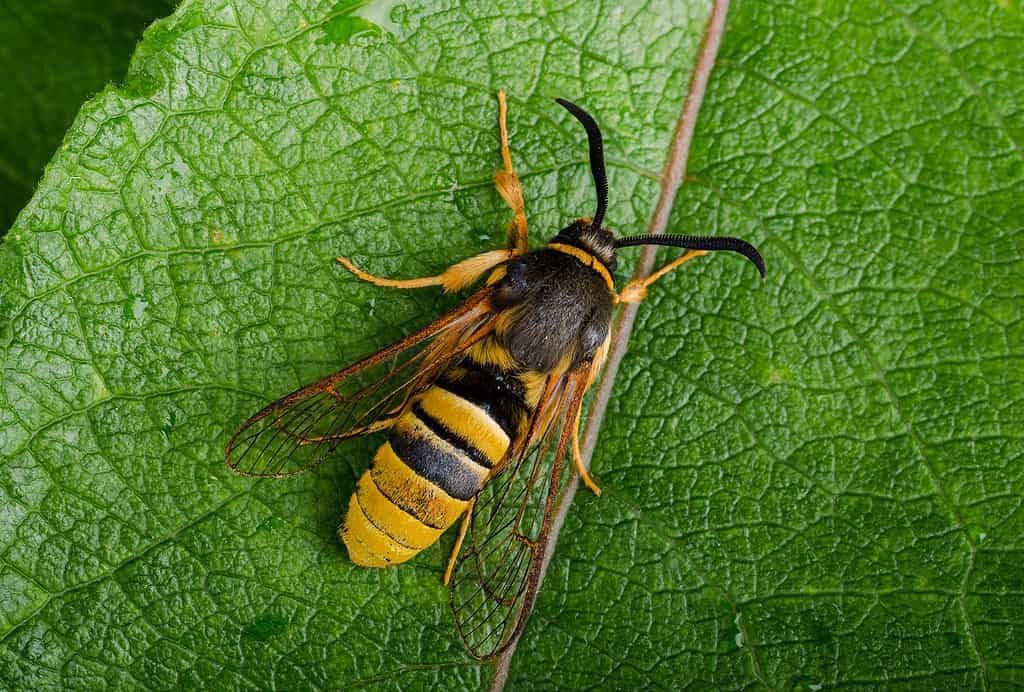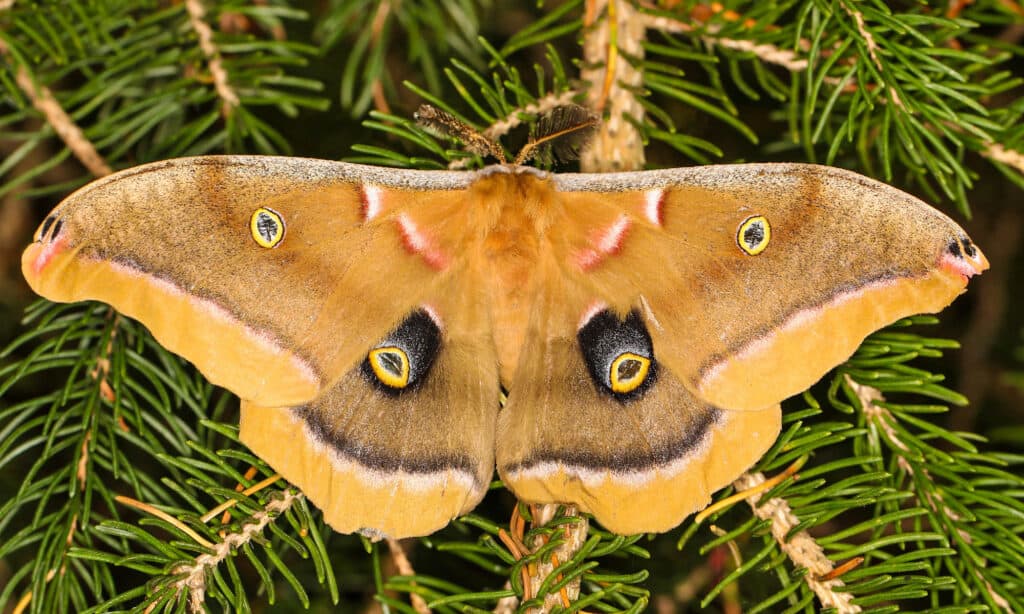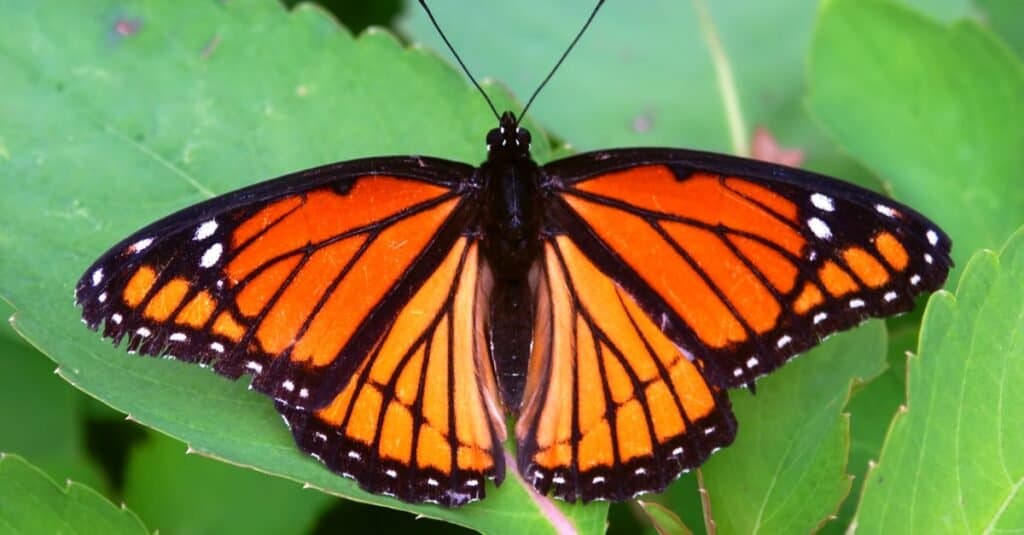Mimicry in the animal kingdom is not just a casual alteration of the skin or mannerisms. It’s a defense mechanism, employed to fool tertiary consumers into becoming wary and, ultimately, abandoning the pursuit. Mimicry has other uses, but defense is primary.
In scientific jargon, it’s termed adverse stimuli, because it triggers instinctive alarms in predators and apex predators. Perhaps the most fascinating mimics are animals that change their colors to make it look as if they are poisonous or are predators themselves.
Types of Mimicry
There are many types of mimicry in the animal kingdom, not just camouflage. Some of these types include the following:
- Batesian
- Auto
- Reproductive
- Wasmannian
- Browerian
- Mullerian
- Vavilovian
- Aggressive
- Gilbertian
- Cryptic
Batesian

The lunar hornet moth,
Sesia bembeciformis, mimics a hornet as a defense against predators.
©DJTaylor/Shutterstock.com
Named after Henry Walter Bates, Batesian mimicry is when prey mimics distasteful or otherwise poisonous animals. It makes the predator believe that biting into it will be very unappetizing and potentially poisonous.
Auto

Some species of moths have false eyes on their wings to deceive potential predators.
©iStock.com/BrianLasenby
Also known as intraspecific mimicry, auto-mimicry is a strange type of mimicry. A worm that disguises its head as its tail is utilizing this sort of mimicry, fooling the predator into essentially flipping a coin to determine which end of the animal presents a killing blow.
Reproductive
This kind of mimic attempts to create the illusion that it’s non-palatable. That same illusion also facilitates attraction with its counterpart, leading to reproduction.
Wasmannian Mimicry
This is a social apery where the prey lives with or around another species of less savory animals, adapting its external features and its habits to copy the species it takes up residence with.
Browerian
This is less about being a mimic and more about consuming foods that fool predators into thinking the animal will taste bad or be poisonous. Creatures that do this are working for the long term, consuming unsavory plants to give themselves a bad taste.
Mullerian

The viceroy butterfly mimics the appearance of the monarch butterfly since predators find monarchs distasteful.
©Jason Patrick Ross/Shutterstock.com
A primary example of Mullerian mimicry is the viceroy butterfly. Since the monarch caterpillar regularly feeds on milkweed (which predators loathe), they become distasteful to predators, even after they become monarch butterflies. The viceroy mimics the appearance of the monarch butterfly so predators will avoid it, thinking it is a monarch.
Vavilovian
Primarily seen in weeds. The weeds share specific attributes with more well-loved plants, so both humans and animals avoid destroying the weeds, assuming they are another plant entirely.
Aggressive Mimicry
This is a type of copying that predators, rather than prey, take on. The predator, usually a parasite or a leech of some sort, mimics the host. The host will accept them, allowing the parasite into the fold, where it can freely feed unsuspected.
Gilbertian
The exact opposite of aggressive. The prey, in this case, mimics the predator, pretending to be the predator, even so far as to attack and mimic the aggressive nature of the predator, driving it away.
Cryptic Mimicry
Though it sounds like it’s related to the dead or some form of encryption, cryptic mimicry is very different. It’s commonly seen in vines that intertwine other plants, changing themselves to look like the very plant they’re curled around.
Mimicry Pronunciation
Mimicry is pronounced: “mim – i – kri”



